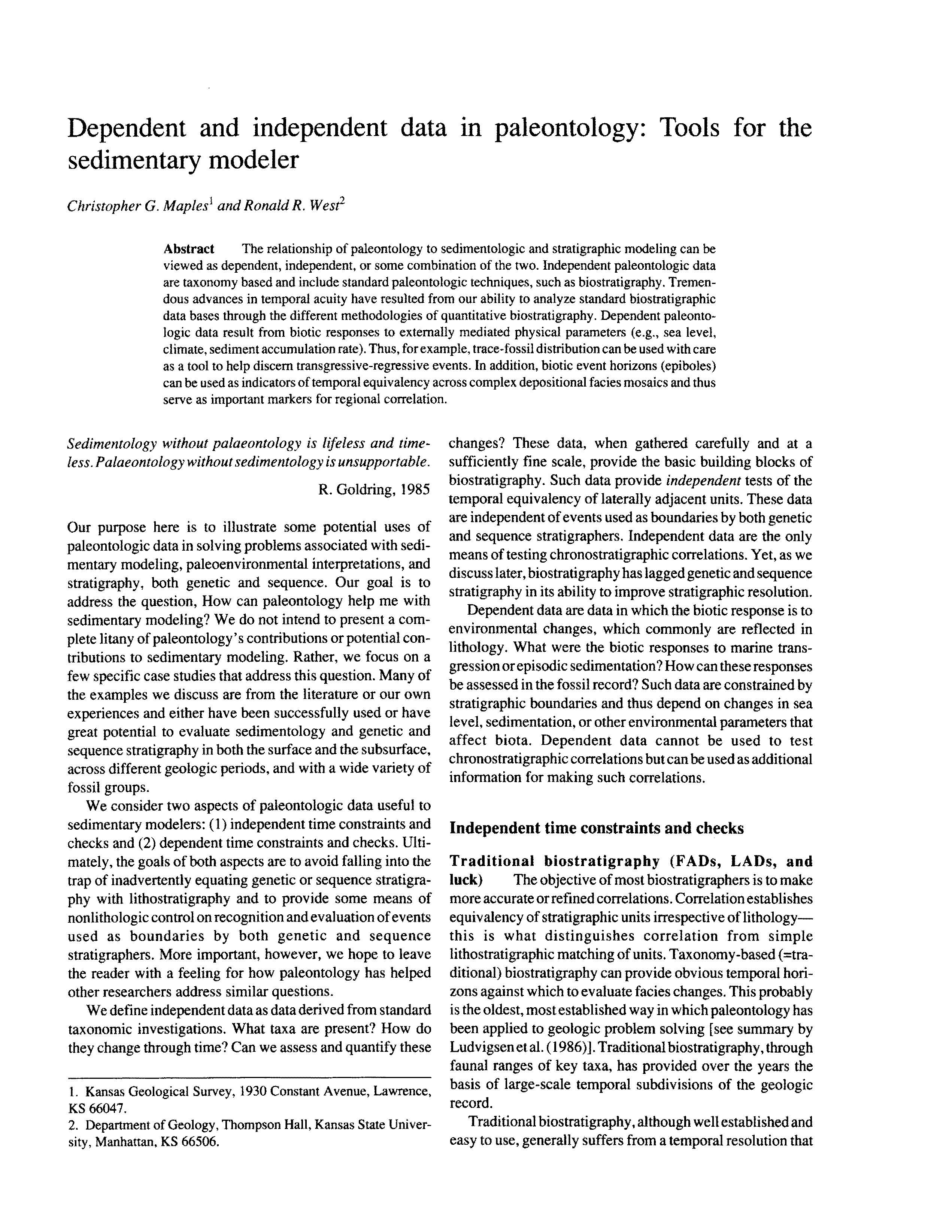Dependent and independent data in paleontology: Tools for the sedimentary modeler
DOI:
https://doi.org/10.17161/kgsbulletin.no.233.20456Abstract
The relationship of paleontology to sedimentologic and stratigraphic modeling can be viewed as dependent, independent, or some combination of the two. Independent paleontologic data are taxonomy based and include standard paleontologic techniques, such as biostratigraphy. Tremendous advances in temporal acuity have resulted from our ability to analyze standard biostratigraphic data bases through the different methodologies of quantitative biostratigraphy. Dependent paleontologic data result from biotic responses to externally mediated physical parameters (e.g., sea level, climate, sediment accumulation rate). Thus, for example, trace-fossil distribution can be used with care as a tool to help discern transgressive-regressive events. In addition, biotic event horizons (epiboles) can be used as indicators of temporal equivalency across complex depositional facies mosaics and thus serve as important markers for regional correlation.
Downloads

